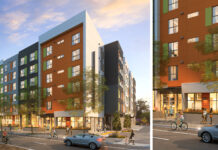 WASHINGTON: US homebuilders’ confidence rebounded in November as both sales expectations and buyer traffic improved.
WASHINGTON: US homebuilders’ confidence rebounded in November as both sales expectations and buyer traffic improved.
The National Association of Home Builders/Wells Fargo index rose to 58 this month, up from 54 in October. That puts the index just short of September’s reading of 59, which was the highest level since November 2005, shortly before the housing bubble burst.
Readings above 50 indicate more builders view sales conditions as good rather than poor.
The index found sentiment had improved in the Northeast, Midwest, South and West. Builders expect sales to increase through the next six months.
Still, other indicators show that rising builder optimism has not necessarily been paired with a significant improvement in sales. Purchases of new homes were nearly flat in September, the Commerce Department reported. The pace of sales for newly built homes has improved a mere 1.7 percent so far this year compared to 2013, putting it below overall economic growth.
When the builder index was at a similar level in early 2006, the number of single-family housing starts was about 60 percent higher, noted Joshua Shapiro, chief U.S. economist at the forecasting firm MFR.
“There remains a big disconnect between what homebuilders are saying and what they are actually doing,” Shapiro said.
Most economists expect that the National Association of Realtors will report that sales of existing homes fell slightly in October. A survey by the data firm FactSet projects sales at an annual rate of 5.15 million for the month, down from 5.17 million in September.
Despite improved buying activity in recent months, sales in 2014 are still projected to lag last year’s total of 5.1 million. Sales of about 5.5 million homes are generally associated with a healthy real estate market.
Rising prices in 2013 have cut into affordability for would-be buyers, limiting sales growth for new homes and cutting into sales for existing homes. On average last year, home prices rose at roughly six times the pace of wages, which limited the benefits of historically low mortgage rates.
Even as home price growth has moderated in recent months, the prices continue to rise at more than double the annual increase in wages. Average hourly pay for non-supervisory workers has risen a meager 2.2 percent over the past year to $20.70, the Labor Department reported earlier this month.
Just 59 percent of homes sold across the United States are affordable on a middle class income, compared to 62 percent last year, the real estate data firm Trulia said.
“Affordability is likely to worsen,” said Jed Kolko, chief economist at Trulia. “Unless incomes increase substantially, homeownership will slip further beyond the reach of many households.”







